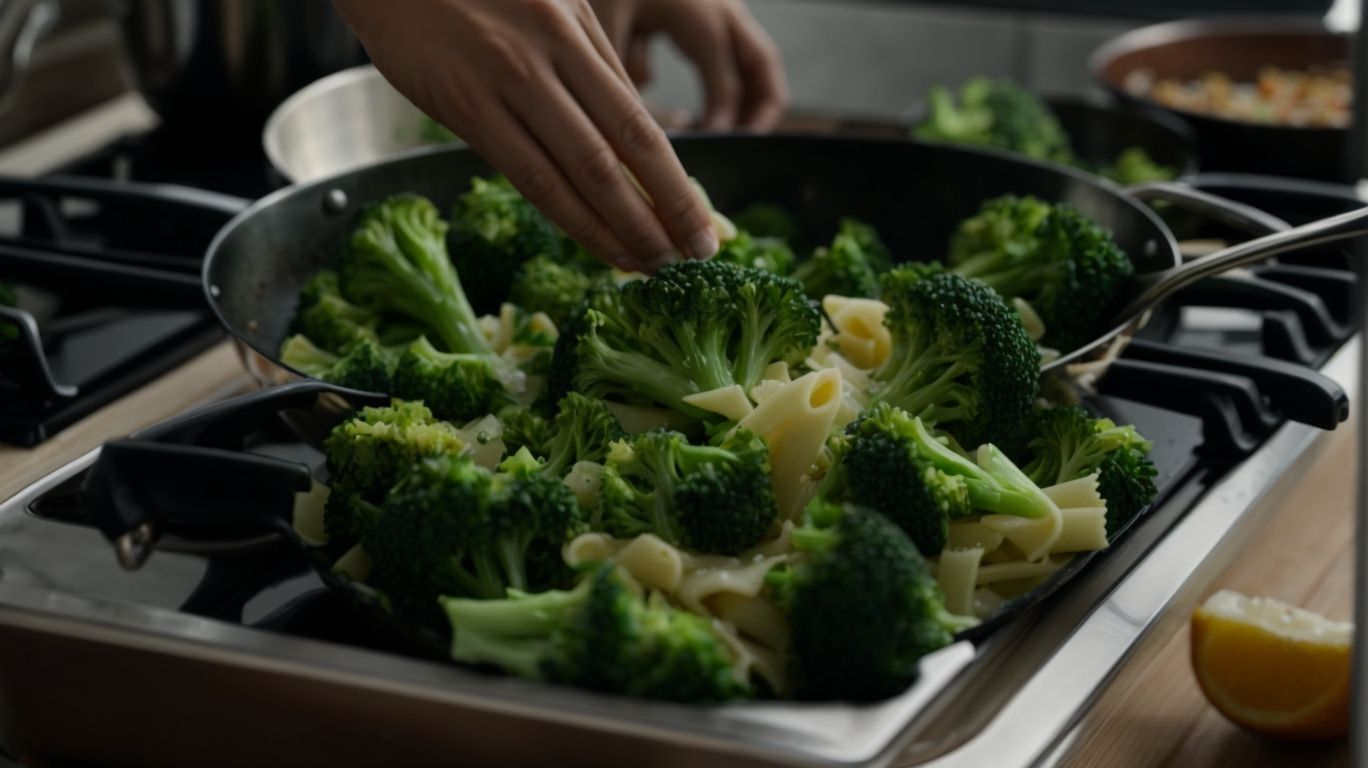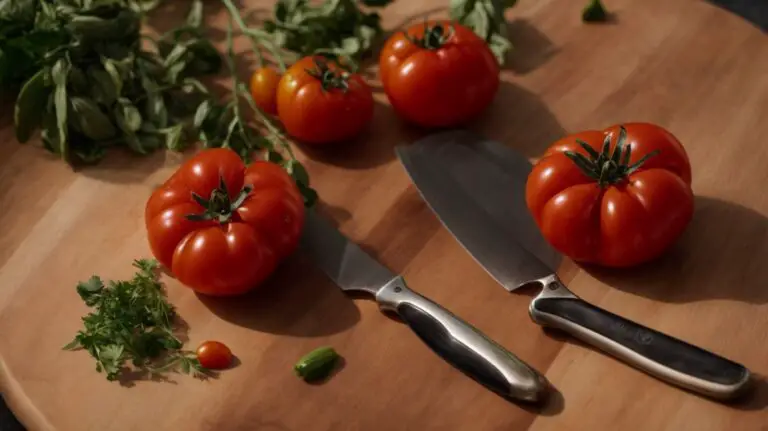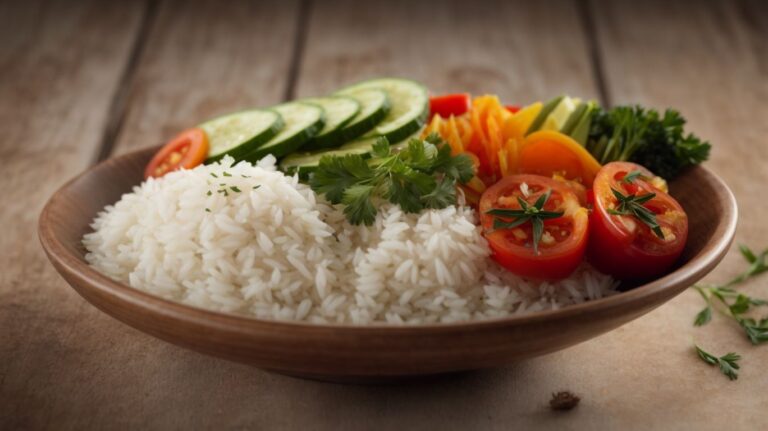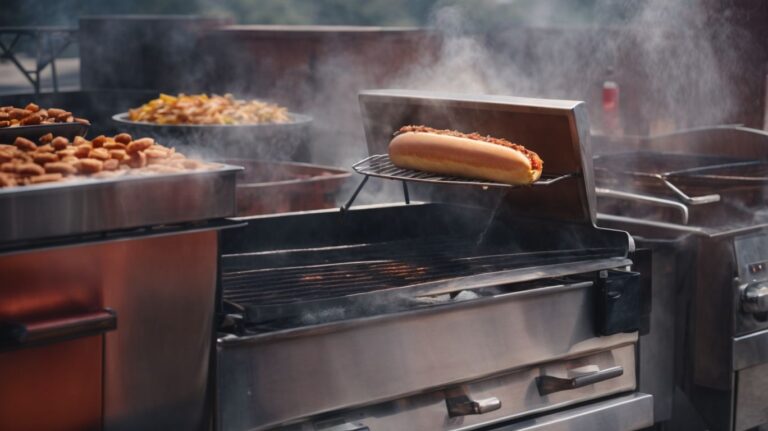How to Cook Frozen Broccoli Into Pasta?
Looking for a quick, nutritious, and budget-friendly meal option? Consider using frozen broccoli in pasta dishes!
We discuss the benefits of incorporating frozen broccoli into your pasta recipes, how to properly prepare frozen broccoli for pasta, the best types of pasta to use, cooking techniques, delicious sauces to pair with your dish, and essential tips for achieving perfectly cooked frozen broccoli pasta.
Dive into the world of frozen broccoli pasta and elevate your culinary skills!
Key Takeaways:
Why Use Frozen Broccoli in Pasta?
Using frozen broccoli in pasta dishes offers a convenient way to incorporate nutritious vegetables into your meals while saving time on preparation.
When preparing pasta dishes, having a bag of frozen broccoli in your freezer can be a game-changer. Not only does it eliminate the need for washing, chopping, and prepping fresh broccoli, but it also ensures that you always have this versatile ingredient on hand.
In terms of nutrition, frozen broccoli retains its vitamins and minerals due to the quick freezing process, making it just as healthy as fresh broccoli. So you can enjoy a nutritious meal without compromising on flavor or quality.
Convenience
One of the primary reasons to opt for frozen broccoli in pasta dishes is the unparalleled convenience it offers in meal preparation, making cooking a breeze.
Just imagine, no more washing, chopping, and blanching; with frozen broccoli, all the prep work is done for you! When you’re in a time crunch or feeling too tired to go through the entire vegetable prepping process, having a bag of frozen broccoli in your freezer is a lifesaver.
Not only does it save you precious time, but it also eliminates the need to worry about the freshness or shelf life of your broccoli. Plus, since it’s already portioned and ready to use, incorporating it into your favorite pasta recipes becomes as easy as can be!
Nutritional Value
Frozen broccoli brings significant nutritional value to pasta dishes, ensuring a healthy boost of vitamins and minerals without compromising on taste.
Broccoli is a rich source of vitamin C, which helps boost the immune system and promote skin health. It contains vitamin K, crucial for bone health and blood clotting. The fiber in broccoli aids digestion and helps maintain a healthy gut.
When added to pasta, frozen broccoli can elevate the dish’s nutritional profile, making it a well-rounded meal. This versatile vegetable is also a good source of antioxidants and phytonutrients, which have numerous health benefits.
Cost-effective
Along with its convenience and nutrition, using frozen broccoli in pasta recipes proves to be a cost-effective solution for preparing wholesome and satisfying meals without breaking the bank.
Not only does frozen broccoli typically come at a lower price point compared to fresh produce, but its long shelf life allows for minimal food waste, making it an economical choice for budget-conscious cooks. Incorporating frozen broccoli into pasta dishes adds a vibrant burst of color and nutrients, enhancing the overall appeal and nutritional value of the meal. With its pre-cut and pre-washed nature, frozen broccoli also saves time and effort in meal preparation, streamlining the cooking process while delivering on flavor and health benefits.
How to Prepare Frozen Broccoli for Pasta?
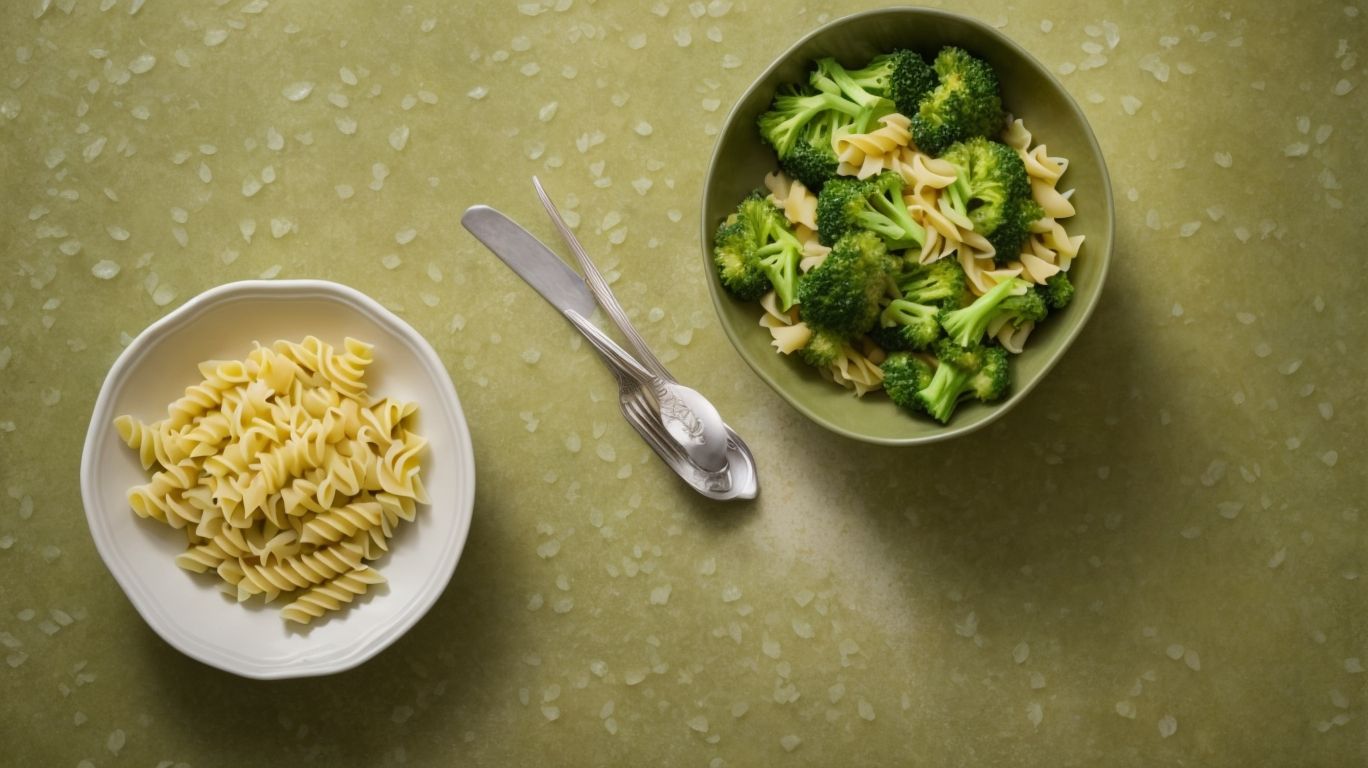
Credits: Poormet.Com – Bobby Davis
Preparing frozen broccoli for pasta involves simple steps such as boiling, sautéing with garlic, and incorporating it seamlessly into your favorite pasta recipes.
When boiling frozen broccoli for pasta, ensure to use a pot filled with salted water brought to a boil. Add the broccoli and cook for about 3-5 minutes until it’s tender but still retains a slight crispiness. Drain the broccoli and shock it in ice water to stop the cooking process.
For sautéing, heat some olive oil in a skillet over medium-high heat. Add minced garlic and cook until fragrant, then toss in the thawed broccoli. Sauté for a few minutes until the broccoli is heated through and coated with the garlic-infused oil.
When incorporating the broccoli into your pasta dishes, consider adding it towards the end of the cooking process to prevent it from getting mushy. Mix it gently with the pasta and other ingredients, allowing the flavors to meld together beautifully.
Thawing the Broccoli
Thawing frozen broccoli before incorporating it into pasta dishes ensures even cooking and optimal flavor absorption, enhancing the overall taste of the dish.
There are several methods to thaw frozen broccoli effectively. One popular approach is to place the broccoli in the refrigerator overnight. This slow thawing process helps maintain the vegetable’s texture and prevents it from becoming mushy when cooked. Alternatively, you can opt for a quicker method by placing the broccoli in a resealable plastic bag and submerging it in cold water for a few hours until thawed.
Once the broccoli is thawed, it’s crucial to pat it dry with paper towels to remove excess moisture. This step is essential to prevent sogginess and ensure proper browning during the cooking process.
Blotting the Broccoli
Blotting excess moisture from thawed frozen broccoli is crucial before adding it to pasta dishes, as it helps prevent sogginess and ensures proper texture in the final dish.
To effectively blot frozen broccoli for pasta recipes, start by ensuring that the broccoli is completely thawed. Pat the thawed broccoli florets with a paper towel, gently pressing down to absorb the excess moisture. For best results, lay the broccoli on a clean kitchen towel and carefully roll it up, applying gentle pressure to remove any remaining water. Repeat this process until the broccoli appears dry. This step is essential as excess moisture can dilute flavors and lead to a watery consistency in your pasta dishes.
What Type of Pasta is Best for this Recipe?
Selecting the right type of pasta is crucial for frozen broccoli dishes, with options such as penne, fusilli, and farfalle complementing the flavors and textures of the dish.
When preparing a recipe with frozen broccoli, opting for penne, fusilli, or farfalle can be a game-changer.
- Penne, with its tube-like shape, is excellent at holding sauce, ensuring each bite is bursting with flavor.
- Fusilli’s spiral twists help it capture the broccoli and sauce in every crevice, creating a delightful interplay of textures.
- Farfalle, with its butterfly shape, not only looks visually appealing but also provides a great surface for the broccoli and sauce to cling to.
These pasta varieties truly elevate the overall dining experience.
Penne
Penne pasta serves as an excellent choice for frozen broccoli recipes, holding sauces well and offering a delightful serving experience with each bite.
Its tubular shape and ridged texture make penne pasta ideal for capturing and holding creamy or chunky sauces, ensuring that each mouthful bursts with flavor. This pasta pairs exceptionally well with Alfredo, marinara, or pesto sauces, adding depth and richness to the dish.
When serving penne pasta with frozen broccoli, consider incorporating roasted garlic, Parmesan cheese, and red pepper flakes for a flavorful twist. For a lighter option, toss the pasta and broccoli with olive oil, lemon zest, and freshly ground black pepper. The versatility of penne pasta makes it perfect for a comforting weeknight meal or a dish to impress guests at a dinner party.
Fusilli
Fusilli pasta is a versatile option for frozen broccoli recipes, allowing for creative sauce pairings and providing a visually appealing presentation that enhances mealtime enjoyment.
The corkscrew shape of fusilli pasta not only catches and holds onto sauces brilliantly, but it also adds a delightful texture to the dish when mixed with tender pieces of broccoli. This shape pairs exceptionally well with creamy sauces like alfredo or a cheesy broccoli sauce, which cling to the spirals for a rich and flavorful bite. The preparation time for fusilli pasta is relatively quick, usually boiling in around 8-10 minutes, making it a convenient choice for easy weeknight meals. To elevate the dish, consider adding ingredients such as grilled chicken, sun-dried tomatoes, roasted garlic, or a sprinkle of parmesan cheese for an enhanced flavor profile.
Farfalle
Farfalle pasta adds a touch of elegance to frozen broccoli recipes, with its bowtie shape holding sauces effectively and creating a visually appealing presentation in serving bowls.
When cooking with farfalle pasta in frozen broccoli dishes, opt for creamy sauces like Alfredo or a light garlic butter sauce that complement the delicate flavors of the pasta and vegetables.
The unique shape of farfalle allows it to trap the sauce, ensuring each bite is bursting with flavor and moisture.
For a finishing touch, sprinkle a generous amount of grated Parmesan cheese over the dish before serving to add a salty kick that balances perfectly with the creamy sauce and earthy broccoli.
How to Cook Frozen Broccoli Pasta?
Cooking frozen broccoli pasta involves precise steps such as boiling the pasta, cooking the broccoli to tender-crisp perfection, and ensuring proper heat levels for a delicious meal.
When preparing frozen broccoli pasta, start by bringing a pot of water to a rolling boil. Add a pinch of salt to enhance the flavor of the pasta. Carefully drop the frozen broccoli into the boiling water and cook until it reaches the desired tenderness. Be attentive not to overcook the broccoli as it can lose its vibrant color and texture.
Next, add the frozen pasta into the same boiling water and cook according to the package instructions for al dente perfection. Stir occasionally to prevent sticking. Once the pasta is cooked, carefully drain it using a colander, reserving some pasta water for potential sauce thinning.
Boiling the Pasta
Boiling the pasta for frozen broccoli dishes requires attention to cooking time, water-to-pasta ratio, and following specific instructions to achieve a perfectly cooked base for the dish.
To begin the process, select a pot that comfortably accommodates the pasta without overcrowding the space. A larger pot with ample water helps prevent the pasta from sticking together during cooking.
Timing is crucial; refer to the pasta packaging for the recommended cooking time, ensuring you achieve the desired level of doneness. Al dente pasta works well with frozen broccoli recipes, offering a satisfying texture to complement the dish.
Following the cooking instructions meticulously is essential for optimal texture and taste. Avoid overcooking the pasta to prevent a mushy consistency which can impact the overall enjoyment of the dish.
Cooking the Broccoli
Cooking the broccoli components in frozen broccoli pasta recipes involves sautéing with garlic, olive oil, and incorporating flavorful sauces to enhance the overall taste profile of the dish.
One method to sauté the broccoli is to heat olive oil in a pan, add minced garlic, and then toss in the broccoli florets until they are slightly tender but still vibrant green. Broccoli pairs well with ingredients like cherry tomatoes, parmesan cheese, and lemon zest to add depth of flavor to the pasta.
For a creamy sauce, a blend of ricotta cheese, lemon juice, and a touch of nutmeg can provide a luxurious texture to the dish. Pasta water can be reserved and used to adjust the sauce thickness, ensuring each bite is perfectly coated.
Combining the Pasta and Broccoli
Bringing together the cooked pasta and broccoli components in frozen broccoli pasta dishes allows for the creation of creamy, flavorful combinations that delight the taste buds, especially when cauliflower is added for a unique twist.
When incorporating the sauce, it’s essential to select one that harmonizes with the earthy flavors of the vegetables. A garlic-infused Alfredo sauce can beautifully complement the broccoli and pasta, imparting a rich and indulgent taste. To enhance the creaminess of the dish, consider adding a touch of heavy cream or a sprinkle of Parmesan cheese. This helps bind all the ingredients together, resulting in a velvety texture that coats each bite.
What Sauces Go Well with Frozen Broccoli Pasta?
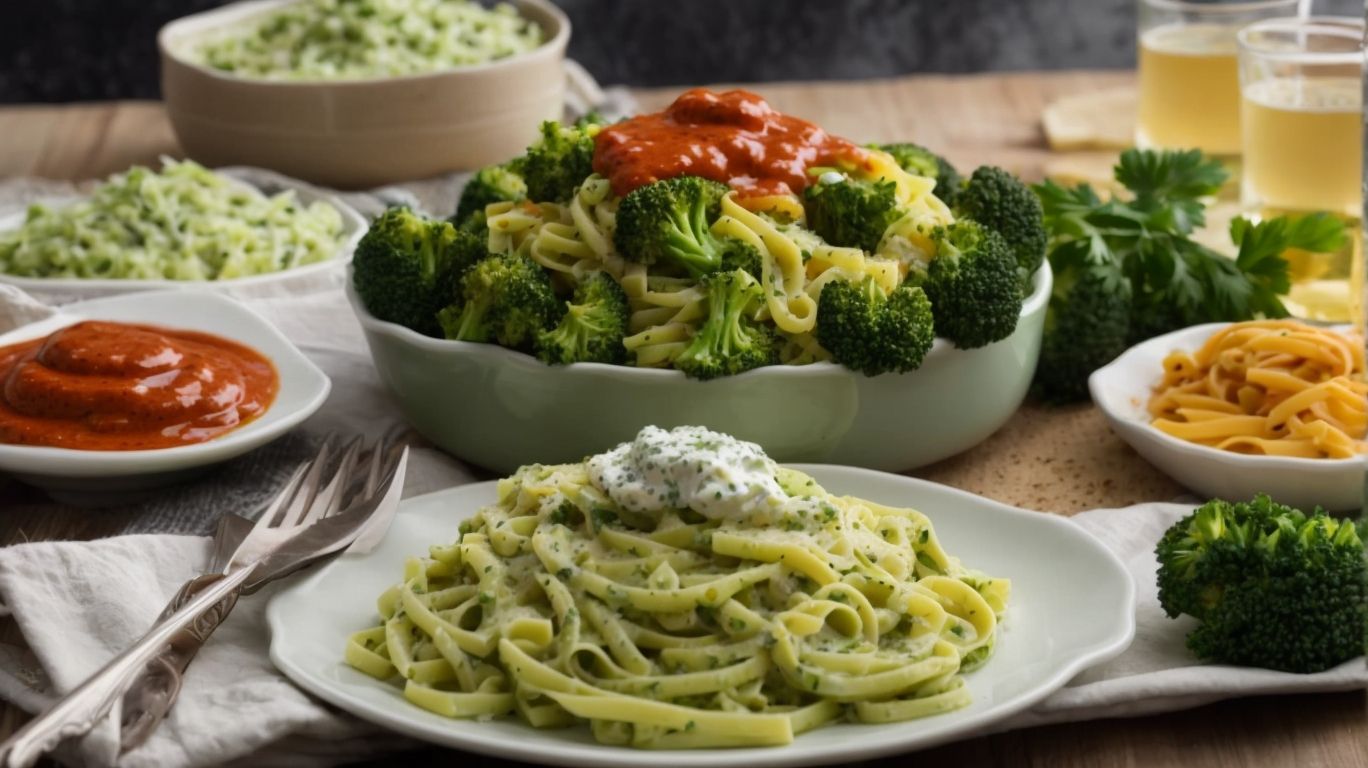
Credits: Poormet.Com – Scott Davis
Frozen broccoli pasta pairs wonderfully with a variety of sauces, including creamy Alfredo, garlic and olive oil, and tomato and basil, each offering distinct flavors to elevate the dish.
When choosing a sauce for your frozen broccoli pasta, consider the rich and indulgent creamy Alfredo. This velvety sauce adds a luxurious touch with its creamy consistency and subtle garlic notes.
On the other hand, for a lighter option, garlic and olive oil brings a simple yet flavorful element, letting the natural sweetness of the broccoli shine through.
If you’re looking for a burst of fresh flavors, tomato and basil sauce with its vibrant colors and fragrant herbs is a perfect choice to complement the earthiness of the broccoli.
Creamy Alfredo Sauce
Creamy Alfredo sauce stands out as a winning choice for frozen broccoli pasta, infusing rich flavors and creamy textures that enhance the overall dining experience.
This luscious sauce is renowned for its indulgent combination of butter, Parmesan cheese, and heavy cream, creating a velvety smooth consistency that coats each piece of broccoli and pasta with decadence. The Alfredo sauce’s rich and savory notes complement the earthy flavors of broccoli, resulting in a harmonious blend that appeals to the palate.
To prepare this delectable dish, start by sautéing the frozen broccoli in a skillet until tender. Then, add the Alfredo sauce and simmer until it thickens slightly. Toss in freshly cooked pasta and gently fold in the sauce until everything is well coated. Serve hot, garnished with a sprinkle of grated Parmesan and a dash of black pepper for an extra kick of flavor.
Garlic and Olive Oil Sauce
Garlic and olive oil sauce offers a quick and flavorful option for frozen broccoli pasta, with aromatic garlic notes and the simplicity of preparation in mere minutes, whether using a microwave or stovetop.
To prepare this delicious sauce, start by mincing a few cloves of garlic and adding them to a small saucepan with a generous drizzle of olive oil. Heat the mixture over low-medium heat on the stovetop, allowing the garlic to infuse its flavor into the oil. If you prefer a quicker method, you can also microwave the garlic and oil in a microwave-safe bowl for about 30-60 seconds, stirring halfway through.
The key is to ensure the garlic is fragrant and slightly golden but not burnt. This step is crucial as it forms the base of the sauce and adds depth of flavor to your dish. Once the sauce is ready, pour it over your steamed broccoli and pasta, ensuring it’s served hot to fully enjoy the rich flavors it brings.
Tomato and Basil Sauce
The tomato and basil sauce is a fresh and vibrant addition to frozen broccoli pasta dishes, with bell pepper flakes adding a hint of spice and freshness to the overall flavor profile when served with fresh ingredients.
Preparing this flavorful sauce is a simple yet rewarding process that begins with sautéing diced onions and minced garlic in olive oil until fragrant.
Next, fresh tomatoes are added, along with a handful of basil leaves, enhancing the sauce with their aromatic essence.
Simmering the mixture slowly allows the flavors to meld together beautifully, creating a rich and savory base for the broccoli and pasta to soak up.
Tips for Perfectly Cooked Frozen Broccoli Pasta
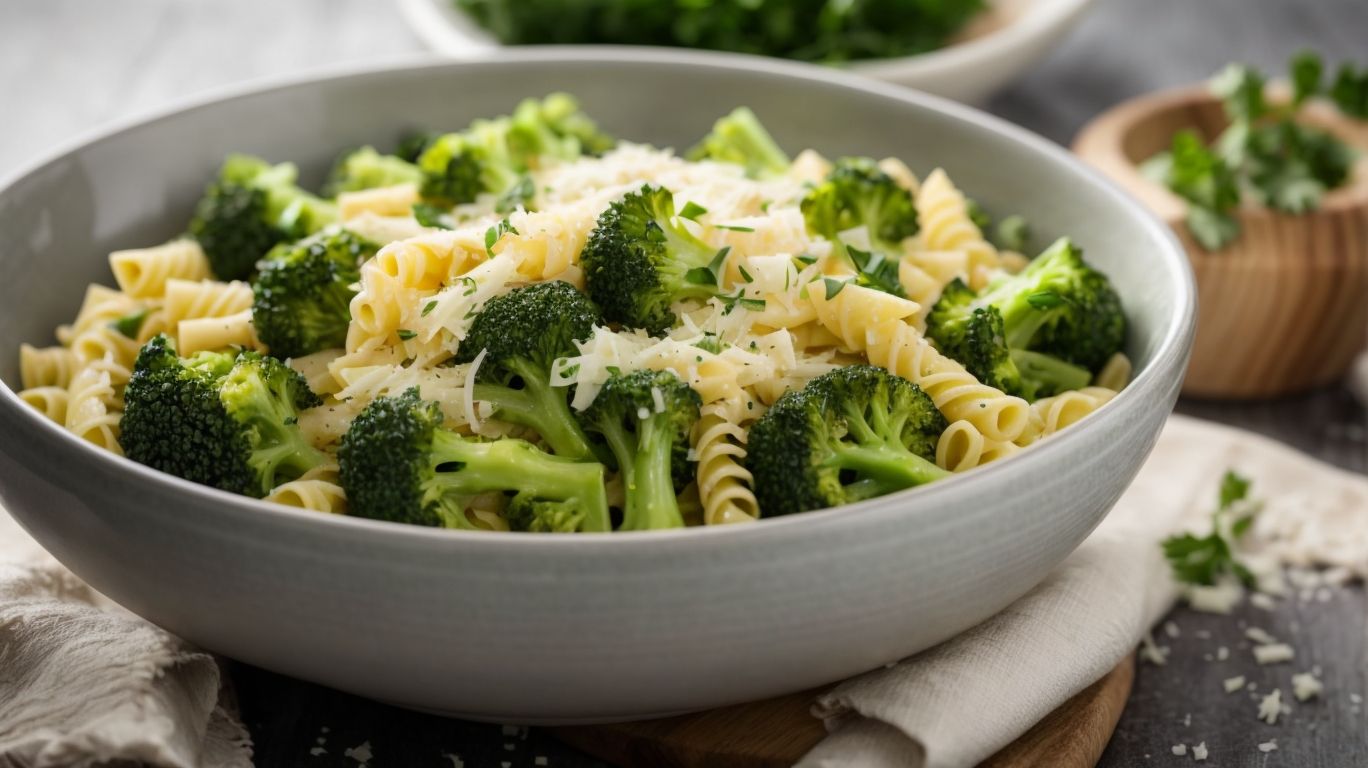
Credits: Poormet.Com – Joe Ramirez
Achieving perfectly cooked frozen broccoli pasta involves incorporating tips such as avoiding overcooking, adding seasonings for enhanced flavor, and using high-quality ingredients to elevate the dish.
When preparing frozen broccoli pasta, ensure to cook it just until it is al dente to prevent the broccoli from becoming mushy and losing its vibrant green color. Seasonings like garlic, red pepper flakes, and a sprinkle of Parmesan cheese can be your best pals in enhancing the taste profile of the dish without overpowering the natural flavors. Opting for high-quality pasta and fresh broccoli can significantly impact the final outcome, making the meal a delight for your taste buds.
Don’t Overcook the Broccoli
One crucial tip for frozen broccoli pasta is to avoid overcooking the broccoli, ensuring it remains tender-crisp and retains its nutritional value, while enhancing the dish with protein-rich seasonings.
By avoiding overcooking the broccoli, you’ll not only maintain its vibrant green color and delightful crunch but also preserve essential vitamins and minerals that can be lost through excessive cooking. This cruciferous vegetable is packed with nutrients, including vitamin C, K, and fiber, making it a valuable addition to any dish.
To further elevate the flavors of your frozen broccoli pasta, consider incorporating protein-rich seasonings such as grilled chicken breast slices or toasted pine nuts. These additions not only enhance the taste but also make the dish a more balanced meal by adding valuable protein sources.
Add Seasonings for Extra Flavor
Enhancing the flavor profile of frozen broccoli pasta involves adding a variety of seasonings and herbs to create a delectable blend of tastes that elevate each serving from the bowl to the table.
When cooking frozen broccoli pasta, the key is to strike a perfect balance between the natural flavors of the ingredients and the additional herbs, spices, and other flavor enhancers you can introduce to bring out the best in the dish. Common choices include garlic, red pepper flakes, Parmesan cheese, and a touch of lemon zest to bring a zingy brightness to the creamy pasta. These seasonings not only add layers of flavor but also help mask any potential blandness that frozen vegetables might sometimes carry.
Use High-Quality Ingredients
Choosing high-quality ingredients for frozen broccoli pasta ensures a superior dining experience, with attention to serving sizes and storage guidelines such as using freezer bags for long-term freshness.
When opting for high-quality ingredients, you are not only enhancing the flavor profile of your dish but also elevating its nutritional value. Fresh broccoli, sourced from reliable vendors, can provide a vibrant color, crisp texture, and optimal taste, making your frozen pasta stand out.
- Consider the serving sizes carefully to ensure each portion is satisfying and balanced in nutrients. By following recommended portion control, you can enjoy a fulfilling meal without excessive calories.
- Proper storage methods, like utilizing freezer bags, are essential to preserve the flavors and textures of the ingredients. Freezer bags help prevent freezer burn and maintain the integrity of the broccoli, ensuring it retains its nutritional benefits even after being frozen for weeks.
- The impact of ingredient quality on the overall meal cannot be understated. Fresh, high-quality ingredients not only enhance taste but also contribute to the nutritional value and visual appeal of the dish.
Conclusion
Incorporating frozen broccoli into pasta recipes emerges as a winning choice, offering delightful flavors, nutritional benefits, and ease of preparation that make it a standout ingredient for a range of flavorful dishes.
The convenience of having frozen broccoli readily available means you can whip up a delicious pasta dish in no time. Whether you prefer a creamy Alfredo sauce or a zesty tomato base, the versatility of frozen broccoli allows you to experiment with various flavor profiles. The vibrant green color of broccoli not only enhances the visual appeal of your pasta but also indicates its high nutritional value, packed with vitamins and minerals.
Frequently Asked Questions
1. Can I cook frozen broccoli directly in pasta?
Yes, you can cook frozen broccoli directly in pasta. Just add the frozen broccoli to the boiling pasta water a few minutes before the pasta is done cooking.
2. Do I need to thaw the frozen broccoli before adding it to my pasta?
No, there’s no need to thaw the frozen broccoli before adding it to your pasta. Cooking it directly from frozen will help retain its nutrients and flavor.
3. How long does it take to cook frozen broccoli in pasta?
It typically takes 3-5 minutes to cook frozen broccoli in pasta. However, this may vary depending on the type and size of the pasta you are using.
4. Can I use any type of pasta with frozen broccoli?
Yes, you can use any type of pasta with frozen broccoli. However, larger pasta shapes like penne or fusilli may work better in terms of evenly cooking the broccoli.
5. Should I add extra seasoning when cooking frozen broccoli in pasta?
It’s up to personal preference, but adding some salt, pepper, and garlic powder can help enhance the flavor of the frozen broccoli when cooking it in pasta.
6. Can I use frozen broccoli in pasta dishes other than spaghetti?
Absolutely! Frozen broccoli can be added to a variety of pasta dishes, such as mac and cheese, Alfredo, and stir-fries. Get creative with your dishes and experiment with different flavors and ingredients.

